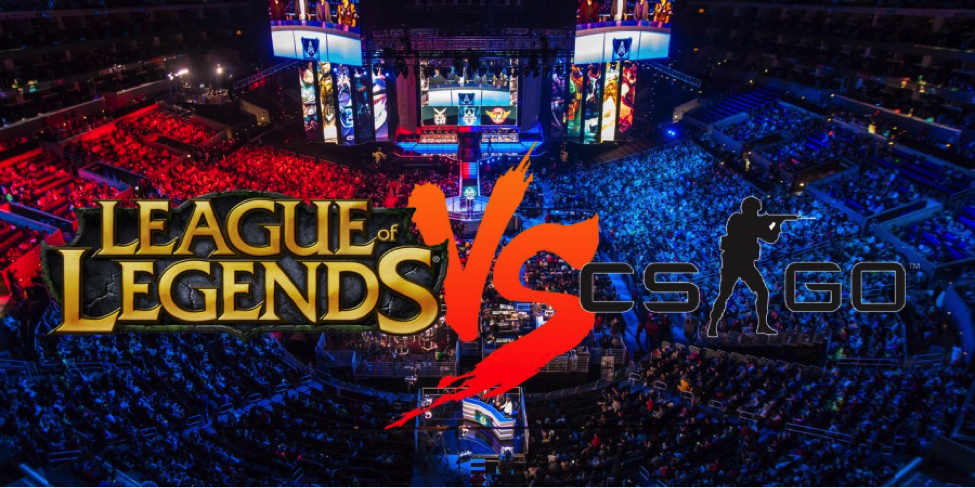

Among the most popular esports games today, League of Legends (LoL) certainly dominates the scene. One wouldn’t think a fantasy-based tower-defense game and a gritty first-person shooter had a lot in common, but both are behemoths in the competitive esports scene, and both are currently vying for the vaulted “most popular esport” category. When it comes to LoL, it has some of the most prize-winning players and also dominates a huge portion of the market for betting on esports. When you think of competitive gaming, LoL is probably the first name that comes to mind. Multiplayer online battle arena games (MOBAs) are hugely popular in gaming, and since their growth in popularity, first-person shooters (FPSs) have basically taken a back seat. Until now, it seems. These intense, fast paced games have never really been tailor-made for esports, with the exception of Counter-Strike: Global Offensive. It may be for just this reason, however, that an FPS game has been competing with even LoL in popularity.
Counter-Strike: Global Offensive (CS:GO) has been growing at an exponential rate over the last couple years. The ESL One: Cologne 2015 had more views on Twitch than any other gaming event that year, including LoL’s League Championship Series (LCS). CS:GO is currently the second most played game on Steam, peaking at over half a million players at a time, and it was the first choice for TBS’s ELeague. What exactly is it about CS:GO that is making it so popular, and is LoL becoming less popular because of it?
First off, CS:GO is a lot less complicated than games like LoL and DOTA 2. Two teams shoot at each other, while trying to either eliminate the other team, or fulfill an objective. It’s much easier for outsiders to understand if they are watching on TV or Twitch, or if they are considering picking the game up themselves. LoL is much different. From an outside spectator’s perspective without intimate knowledge of the way the game is played, it looks chaotic, and there is also a very steep learning curve for new players. It’s much less approachable than a game like CS:GO.
Don’t get me wrong. The LoL scene is doing fine, and certainly isn’t going anywhere anytime soon. But CS:GO is a serious contender right now for the first place spot in the esports industry. LoL has been at the top for a long time now, but there are aspects of CS:GO that some people believe are better than LoL’s scene.
CS:GO is anyone’s game. Whereas LoL has a handful of teams that consistently dominate the professional circuit, CS:GO isn’t dominated by any one team or country. There is plenty of room for underdog teams to rise up and win some glory. There are more tournaments per year in CS:GO than in LoL, as well, giving even more opportunities for upsets. And now, with the inclusion of ELeague, there are even more matches per year for viewers and players alike to look forward to. Some team owners in the CS:GO scene have even said there are too many tournaments, and that it is difficult for players to keep up.
"We’ve seen teams in the past that have traveled to too many events and tried to play in every global LAN. That results in a team not getting enough practice and enough rest at home,” says Jason Lake, owner of Complexity. While this may seem problematic for some overworked teams, if done right, it allows teams to have more opportunities to work overtime, and pull themselves up by their bootstraps. It also means there is much more for viewers to watch.
Another large factor in the growing interest and popularity of CS:GO is the increase of their prize pools. Many professional-level tournaments, including Major League Gaming, have prize pools of $250,000, and Dreamhack announced that they alone will give away over $1,000,000 in prize money this year. ELeague has a prize pool of $1,400,000, which was raised from an already impressive $1,200,000. This huge increase in prize money is great for publicity, generating more interest from players, viewers, and investors. ELeague is also a huge deal, in that it may gather many more viewers for CS:GO—viewers who may never have watched esports otherwise. As the first televised esport, we can only expect that this will do wonders for CS:GO as a whole, and will definitely give them boost that other esports like LoL won’t get.
Lastly, CS:GO has finally caught onto the popularity of betting on esports. By including skins in CS:GO, anyone can now bet on competitive games. And because CS:GO is significantly easier for an outsider to understand than LoL or DOTA 2, betting on your favorite team is much less complicated.
So will LoL suffer at all as a result of CS:GO’s growing success? Maybe, but if so, not much. It’s true that some of their viewership is being taken, and some of their players, too. But LoL is a giant in the esports industry, and will continue to grow (albeit slower than CS:GO is). Do we think that CS:GO will take LoL’s place at the top? Not likely, but it could happen. They may seem to appeal to entirely different gamers and fans, but if enough PC gamers are willing to eschew CS:GO’s noob-friendly nature for LoL’s steep learning curve, League of Legends might be the first free-to play competitive game to become the most popular esport in the world.